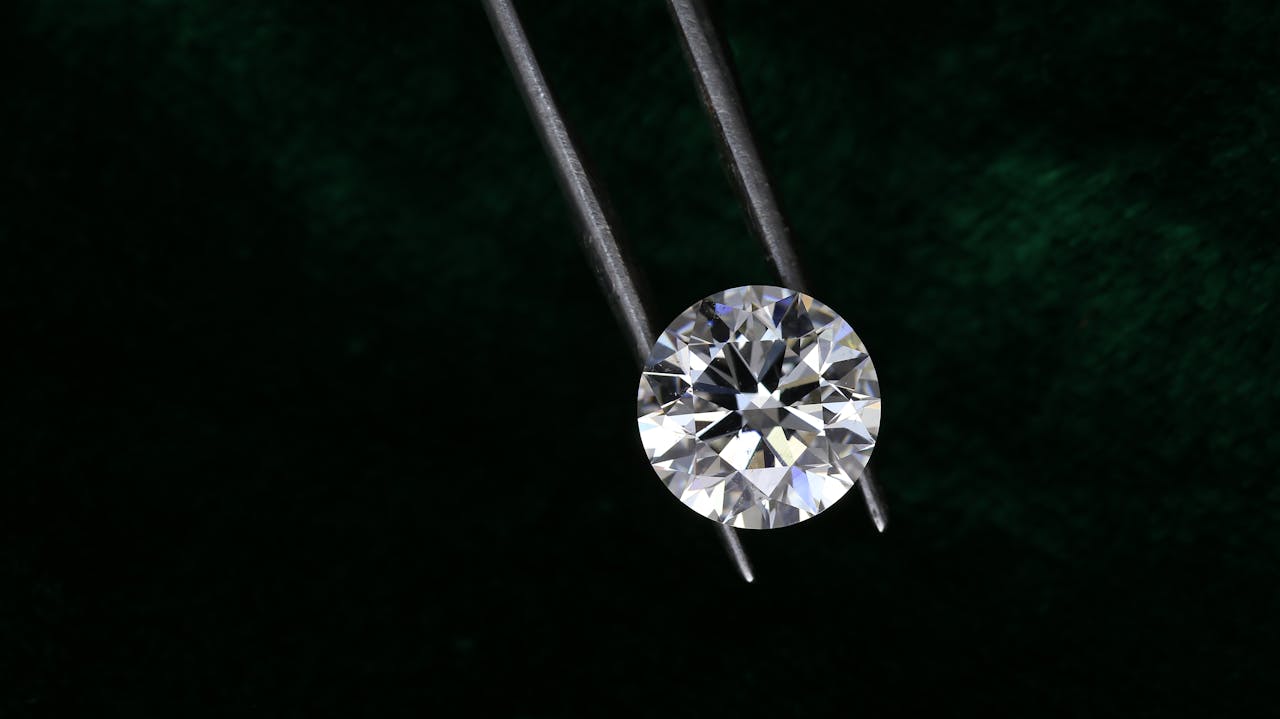
How to Find Rare NFTs: A Guide for NFT Collectors
When it comes to NFTs, rarity is perhaps the most important factor in determining an asset’s value. Collectors are always on the hunt for unique pieces that are in high demand due to their limited supply, recent vitality, or other distinctive attributes.
However, with the explosion of NFT marketplaces and the return of popularity across multiple blockchains, finding these truly rare NFTs has become almost impossible.
This is where Ilunafriq comes in. We’re a new type of multichain NFT aggregator that simplifies the discovery, organization, and trading of rare digital assets.
By consolidating NFTs from major marketplaces across various blockchains, Ilunafriq gives collectors a seamless way to track and acquire rare NFTs with ease.
Key Takeaways
- NFT rarity matters: Limited supply, unique traits, and historical significance drive value.
- Finding rare NFTs is easier with Ilunafriq: It aggregates rarity rankings, price trends, and listings across multiple blockchains.
- Avoid scams and overpriced buys: Ilunafriq helps verify NFT legitimacy and track the best deals.
The Importance of NFT Rarity
NFT rarity is what sets valuable digital assets apart from the rest. The rarer an NFT, the more desirable, and often, the more valuable it becomes. But what exactly makes an NFT rare? It comes down to a mix of scarcity, unique traits, and historical importance.
- Limited Supply: Scarcity naturally drives up demand. Collections with a smaller number of NFTs tend to have higher value.
- Unique Attributes: NFTs with rare traits, whether visual or functional, command premium prices.
- Historical Significance: Early NFTs or those linked to important milestones in blockchain history often become valuable collectibles.
There are various methods to rank NFT rarity, including:
- Trait-Based Rarity: Analyzing how rare individual attributes are within a collection.
- Statistical Rarity: Multiplying the probabilities of multiple rare traits appearing together.
- Overall Rarity Score: Combining both trait and statistical rarity for an aggregate ranking.
You might also be interested in learning more about NFT sniping.
Best Tools and Platforms for Finding Rare NFTs
Finding rare NFTs isn’t just about luck, it’s about having the right tools to pinpoint valuable assets before the rest of the market catches on.
While several platforms provide helpful insights, most fall short when it comes to offering a truly comprehensive way to track NFTs across multiple blockchains in one place.
In order to make sure you’re using the right ones, here’s some commonly used platforms:
- Rarity Sniper: Specializes in rarity rankings for Ethereum-based NFTs but does not support multi-chain discovery.
- NFTGo: Provides rarity rankings along with market analytics and whale tracking, but focuses on Ethereum and lacks a holistic aggregator function.
- MomentRanks: Primarily centered on Flow blockchain collectibles, making it niche-specific.
While these tools provide useful insights, collectors often find themselves juggling multiple platforms to compare rarity, analyze price trends, and track NFT availability. Ilunafriq solves this problem by aggregating data from multiple NFT marketplaces across different blockchains into a single, user-friendly interface.
With Ilunafriq, collectors can:
- Aggregate their NFT collections across multiple blockchains, including Ethereum, Avalanche, Tezos, Flow, and ImmutableX.
- Seamlessly browse and compare rarity rankings from integrated marketplaces like OpenSea, Rarible, SuperRare, Objkt, and Foundation.
- Showcase their NFT portfolio in a single space with customizable galleries and personalized URLs.
Instead of jumping between different platforms, collectors can use Ilunafriq to handle their entire portfolio from one easy-to-use interface.
How to Research NFT Collections Before Buying
Before buying a rare NFT, collectors should do their homework to make sure they’re making a smart investment.
The NFT market changes fast, and without proper research, collectors might end up overpaying or getting involved in projects that don’t have much long-term value.
Here’s how to check out an NFT before you buy it:
Examine Sales History: Check past transactions to see if the NFT has a history of strong demand. Look for steady appreciation in price rather than erratic spikes, which can sometimes indicate price manipulation or wash trading.
Analyze Community Strength: A thriving community is often a sign of a healthy project. Engage in community channels like Twitter and Discord to assess activity levels, sentiment, and developer transparency. Projects with active, engaged communities tend to sustain long-term value.
Evaluate Roadmap Credibility: A strong roadmap with clear, achievable goals is essential. Look for projects that have met past milestones and have a well-defined vision for the future. Beware of overly ambitious promises that lack substance.
Check Rarity and Utility: Some NFTs gain value not just from their rarity but also from their utility. Look for projects that offer exclusive perks, staking rewards, or integration into metaverse ecosystems.
Ilunafriq’s marketplace integration makes researching a breeze. Instead of hopping between different platforms, collectors can use Ilunafriq to:
- Instantly verify sales history and pricing trends across multiple marketplaces.
- Cross-check NFT rarity rankings and track listing fluctuations.
- Access a centralized view of all available NFTs from integrated platforms like OpenSea, Rarible, SuperRare, Objkt, and Foundation.
By using Ilunafriq, collectors can make informed decisions with confidence, reducing the risk of impulsive or uninformed purchases.
How Multi-Chain Platforms Help You Find Rare NFTs
While Ethereum remains the dominant blockchain for NFTs, alternative chains like Solana, Tezos, Avalanche, and ImmutableX are gaining traction. This is why exploring multiple blockchains can help collectors find hidden gems that are undervalued due to lower competition.
Ilunafriq’s multi-chain support provides a major advantage by allowing collectors to:
- Discover rare NFTs across multiple blockchains without switching between platforms.
- Compare price differences for similar NFTs on different chains.
- Track cross-chain sales activity to identify emerging trends.
With Ilunafriq, collectors enjoy the unparalleled ability to effortlessly compare 1/1 NFT prices across platforms like OpenSea, SuperRare, Rarible, Foundation, and Objkt. This unified approach ensures you never miss out on a unique treasure, allowing for astute decision-making tailored to your investment strategy.
Strategies for Buying Rare NFTs at the Best Price
Making sure you score rare NFTs requires a pretty strategic approach, so it’s best to start by using some of the most effective strategies below:
Set Up Alerts for Auctions and New Drops: By setting up alerts, collectors can be among the first to know about new drops and auctions. Being early to a drop often means you can snag valuable NFTs at their mint price, potentially securing a great deal before prices rise.
Participate in Whitelist Sales: Many NFT projects reward their dedicated community members by offering them early access through whitelist sales. This means you can purchase NFTs before the public mint, often at a lower price, and with less competition from other buyers.
Use a Watchlist to Monitor Prices: With Ilunafriq’s watchlist feature, collectors can keep an eye on price movements and set up alerts for specific NFTs they’re interested in. This ensures they can act quickly and buy at the best possible price, maximizing their investment potential.
Related: Best NFT Aggregators
How to Avoid Scams and Fake Rarity
As great as the space is, the NFT environment still has some scams, making it essential for collectors to remain vigilant.
Some of these common scams that you’ll want to avoid, include:
Wash Trading:
This involves artificially boosting an NFT’s sales volume to create a false sense of demand and popularity. By making it look like an NFT is in high demand, sellers can trick buyers into thinking they’re getting a hot item.
Fake Collections:
Scammers create duplicate or imitation collections that look like legitimate ones to deceive buyers. These imposters aim to trick collectors into purchasing counterfeit NFTs, thinking they are part of a genuine collection.
Manipulated Rarity Scores:
Some projects falsely advertise certain traits as being rarer than they actually are. This misleading information can entice collectors to pay more, believing they are acquiring something unique and valuable.
To combat these risks, Ilunafriq aggregates verified marketplace data, helping collectors identify genuine NFTs and avoid fraudulent listings.
With Ilunafriq, users can cross-check an NFT’s legitimacy and review its transaction history to make informed decisions.
Read more about NFT scamming here.
Conclusion
In the end, rarity is a fundamental aspect of NFT collecting, influencing value and desirability. By using reliable tools and conducting thorough research, collectors can improve their ability to find and acquire rare NFTs.
Ilunafriq simplifies this process by offering an all-in-one solution for discovering, tracking, and securing rare NFTs across multiple chains.
Whether you’re an experienced collector or just starting, using a powerful NFT aggregator like Ilunafriq can help you stay ahead in the constantly evolving NFT market.
Start using Ilunafriq today and start finding rare NFTs effortlessly.
FAQ
- How can I find rare NFTs easily? Use Ilunafriq, a multichain NFT aggregator that consolidates rarity rankings, price trends, and listings from top marketplaces like OpenSea, Rarible, and SuperRare.
- What factors determine NFT rarity? NFT rarity is based on limited supply, unique traits, and historical significance. Some NFTs also gain value from additional utility, such as staking or in-game perks.
- How do I avoid scams when buying NFTs? Verify sales history, check community engagement, and use trusted platforms like Ilunafriq, which aggregates verified marketplace data to help you make informed buying decisions.




